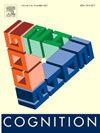在连续搜索中学习有规律的目标位置跨试转移需要意识 - 一项眼动追踪研究。
IF 2.8
1区 心理学
Q1 PSYCHOLOGY, EXPERIMENTAL
引用次数: 0
摘要
在平行、"弹出式 "视觉搜索过程中,人们可以学习和使用目标项目定位的静态和动态(交叉试验)规律。静态目标定位学习同样适用于串行搜索,然而,逐项扫描的要求阻碍了动态规律的学习。此外,还有人质疑,明确的意识是否是利用动态规律性来优化成绩的必要条件。本研究重新探讨了当目标位置的规律性移动频繁发生时,是否可以在序列搜索中学习到动态规律,以及这种学习是否与对动态规则的认知相关。我们采用了与 Yu 等人(2023 年)用来证明并行搜索中动态学习的相同规律性:在 80% 的试验中,目标位置在圆形阵列内沿(逆)顺时针方向发生交叉转移,而在相反方向(10%)或其他随机方向(10%)的不规则转移中,目标位置发生交叉转移。结果表明,约 70% 的参与者学会了动态规律性,成绩的提高与意识相关:他们对目标朝频繁方向移动的可能性估计得越准确,收益就越大。重要的是,部分收益在搜索早期就已经产生:无论目标是否出现在预测位置,大部分最开始的短时眼动都是指向预测位置的。我们将讨论这种由规则驱动的行为是否与意识控制有因果关系。本文章由计算机程序翻译,如有差异,请以英文原文为准。
Learning regular cross-trial shifts of the target location in serial search involves awareness – An eye-tracking study
People can learn and use both static and dynamic (cross-trial) regularities in the positioning of target items during parallel, ‘pop-out’ visual search. Static target-location learning also works in serial search, however, acquiring dynamic regularities is hindered by the demands of item-by-item scanning. Also, questions have been raised regarding whether explicit awareness is necessary for using dynamic regularities to optimize performance. The present study re-examined if dynamic regularities can be learned in serial search when regular shifts of the target location occur frequently, and if such learning correlates with awareness of the dynamic rule. We adopted the same regularity used by Yu et al. (2023) to demonstrate dynamic learning in parallel search: a cross-trial shift of the target location in a (counter-)clockwise direction within a circular array in 80 % of the trials, compared to irregular shifts in the opposite direction (10 %) or some other random direction (10 %). The results showed that about 70 % of participants learned the dynamic regularity, with performance gains correlating with awareness: the more accurately they estimated the likelihood of the target shifting in the frequent direction, the greater their gains. Importantly, part of the gains accrued already early during the search: a large proportion of the very first and short-latency eye movements were directed to the predicted location, regardless of the target appeared there. We discuss whether this rule-driven behavior is causally mediated by conscious control.
求助全文
通过发布文献求助,成功后即可免费获取论文全文。
去求助
来源期刊

Cognition
PSYCHOLOGY, EXPERIMENTAL-
CiteScore
6.40
自引率
5.90%
发文量
283
期刊介绍:
Cognition is an international journal that publishes theoretical and experimental papers on the study of the mind. It covers a wide variety of subjects concerning all the different aspects of cognition, ranging from biological and experimental studies to formal analysis. Contributions from the fields of psychology, neuroscience, linguistics, computer science, mathematics, ethology and philosophy are welcome in this journal provided that they have some bearing on the functioning of the mind. In addition, the journal serves as a forum for discussion of social and political aspects of cognitive science.
 求助内容:
求助内容: 应助结果提醒方式:
应助结果提醒方式:


